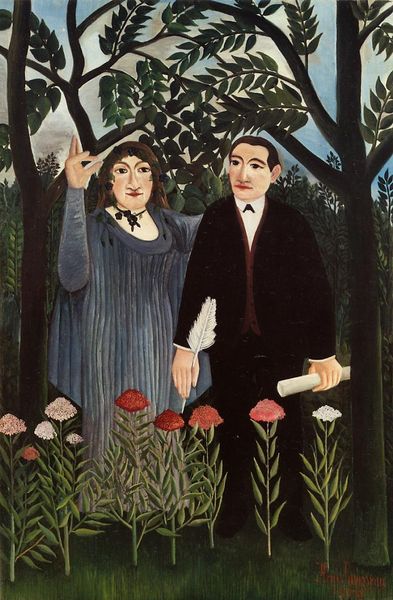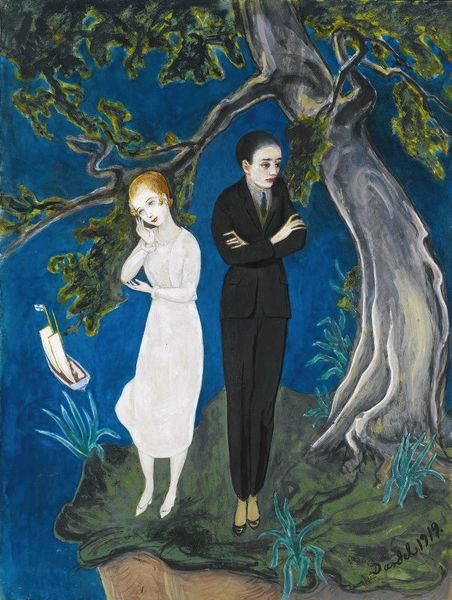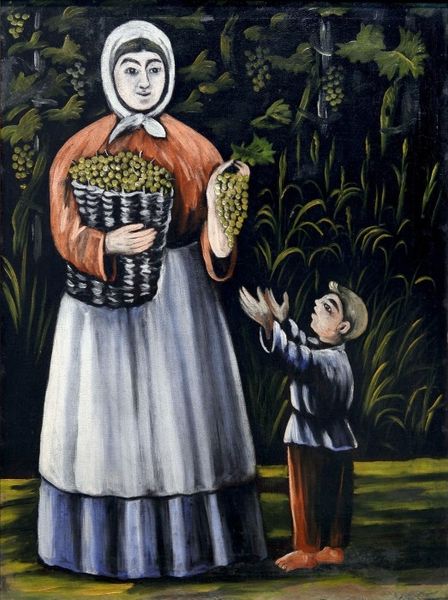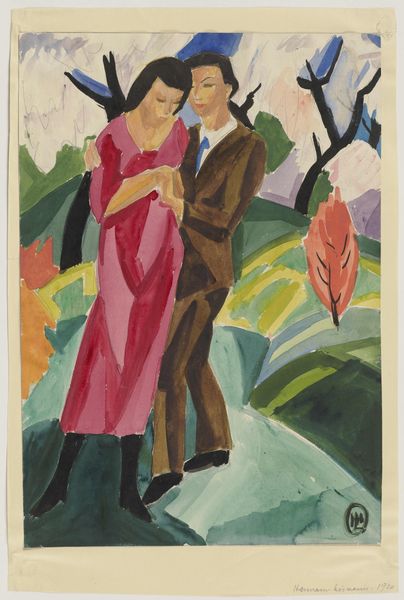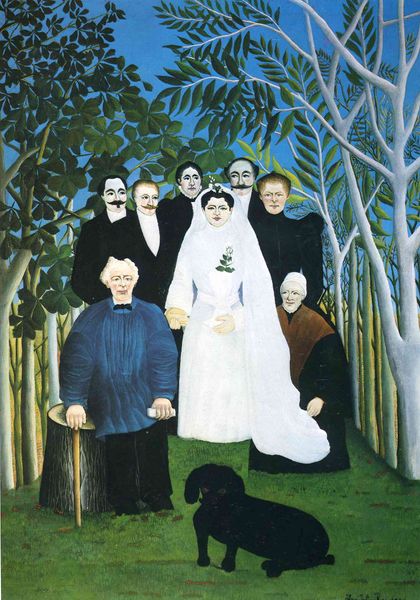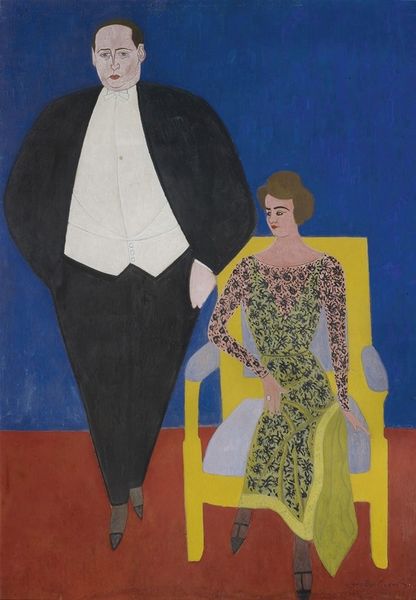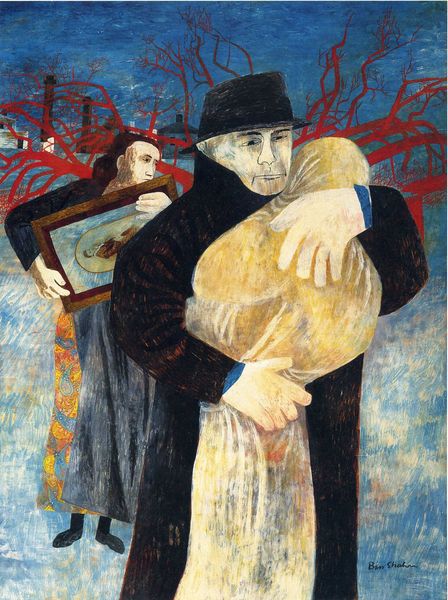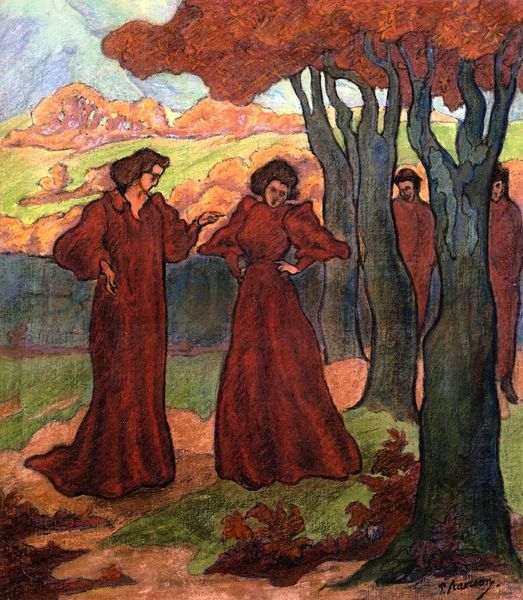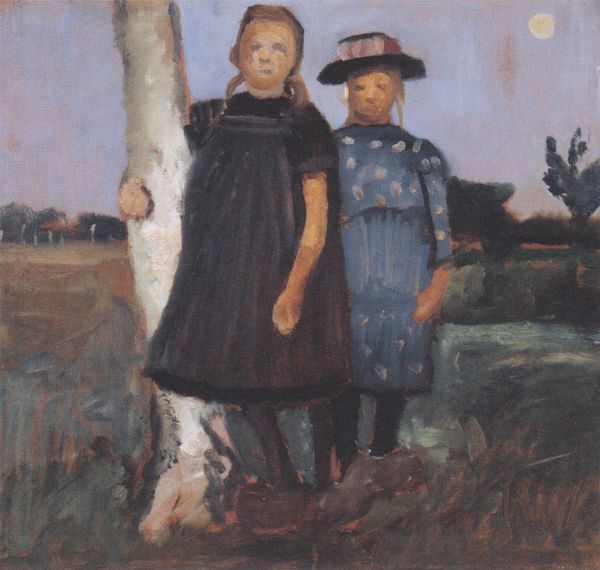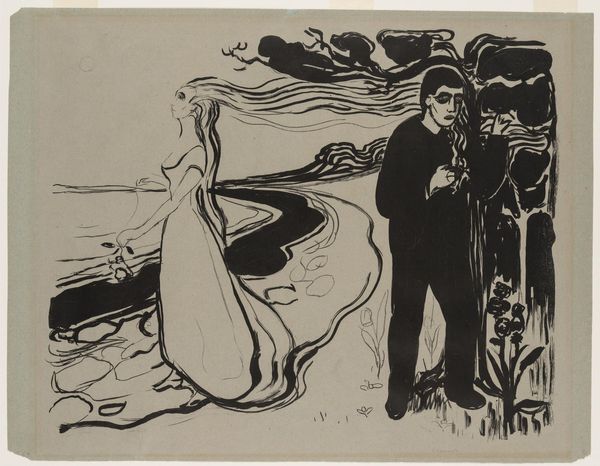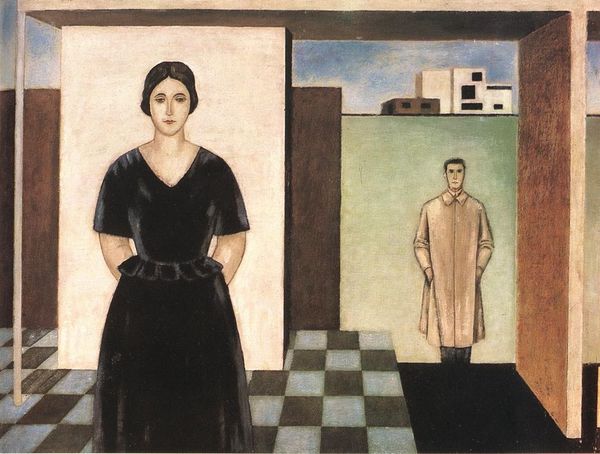
painting, oil-paint
#
portrait
#
painting
#
oil-paint
#
landscape
#
intimism
#
plant
#
surrealism
#
surrealism
Copyright: Public domain
Curator: Ah, Rousseau's "The Muse Inspiring the Poet," from 1909. What a compelling study in intimacy set within this invented landscape. The Pushkin Museum has truly preserved it well. Editor: I have to say, it feels a little… awkward? They're so close, yet the emotional distance reads like miles. He's all dressed up, like he is ready for a formal event, and she’s there, floating ethereally beside him. It’s a charming, almost clumsy kind of surrealism. Curator: Indeed. Notice how the botanical details—the plants, the arboreal motifs—they're meticulous, verging on obsessive. The structure of the composition seems to be deliberately flattened, denying conventional perspective. Editor: Which kind of makes it for me, honestly. Like looking into a dream. You can almost smell the uncanny valley. The red, almost clover-shaped flower things on the ground definitely have that bizarre Rousseau feeling I recognize from his jungles. But I agree the two main subjects are eerily proportioned and flattened. Curator: We observe an insistent symmetry, almost mirroring, not just in the subjects, but in the vegetation surrounding them. One may see it as a strategy. The poem he's clutching is as much the subject as the poet and his muse. The plants at their feet may reference artistic inspiration. Editor: Maybe, and his slightly downturned mouth? Maybe that says even he, our great poet, is a little unsure about what inspiration is actually coming. Look at his left hand. With the tightly rolled poem! Such an obvious symbol, but I love it! And she—it’s like she's already somewhere else, directing traffic for the invisible. Or maybe she is asking the viewers to be still, stay silent as the great master works. It’s like the visual representation of silence. Curator: Rousseau's naiveté, as it's often termed, can also be considered a studied manipulation of form. It's precisely the unexpected spatial relations that challenge our conventions of portraiture and pictorial depth. And the plants in a way look as much as one of the couple, or act as a pedestal that sets off their dual-portrait. Editor: That’s true. Rousseau, consciously or not, crafted this incredible mood where solemnity rubs shoulders with the ridiculous, resulting in something strangely profound. His naivete may be exactly what makes this moment resonate so intensely. The muse herself could only stand to point like that if everyone stayed quite still to see her in the garden. Curator: A fascinating juxtaposition, certainly one to reflect upon long after viewing. Thank you for offering an imaginative viewpoint. Editor: My pleasure! It certainly is a picture to talk about for hours. Thanks.
Comments
No comments
Be the first to comment and join the conversation on the ultimate creative platform.
